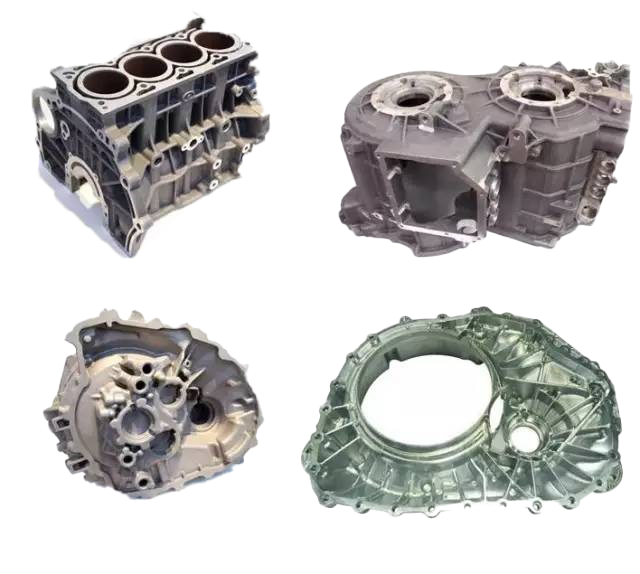E- בריוו פֿאָרמאַט טעות
emailCannotEmpty
emailDoesExist
pwdLetterLimtTip
inconsistentPwd
pwdLetterLimtTip
inconsistentPwd

נייַעס
What Are The Processing Characteristics of Aluminum Alloy Die Castings
The reason for the immediate shortcomings of aluminum alloy die-casting is generally due to the wrong planning and plan of the abrasive tool and aluminum die-casting; or the overall design of the casting parts is unscientific, and the operation steps are wrong, and the casting process standards are wrong; Unskilled and many other reasons, all of which lead to the shortcomings of aluminum alloy die-casting.
What are the processing characteristics of aluminum alloy die castings?

Aluminum alloy die-casting plays an extremely important role in the operation of machinery and equipment. When purchasing, we should pay attention to not having to buy defective aluminum alloy die-casting.
Temperature plays an extremely important role in the production of every product, especially aluminum alloy die-casting, which not only harms the quality of the abrasive tool, but also the service life of the product.
The control of temperature is the control of the quenching and tempering treatment method of the surface layer. Its size should be carefully controlled. If the temperature in the die-casting production process is small, it is very easy to cause a lack of raw materials on the surface layer, and the products cannot travel. In the case where the temperature is too high, the obtained mill has many disadvantages, such as cracks. Only when the temperature is stable in the die-casting production process, the quality of the formed abrasive is considered to be good, and the obtained skin is clean and smooth.
The specifications of the parts are high-precision, generally equal to grade 6~7, or even up to grade 4; the surface smoothness is good, generally grade 5~8; high compressive strength and strength, compressive strength is generally 25~30% higher than sand casting, but tensile strength is reduced by about 70%; stable specifications, good exchangeability; aluminum die-casting with thick walls and complicated of castings. For example, the small wall thickness of today's zinc alloy die castings reaches 0.2mm; the aluminum alloy castings reach 0.5mm; the small casting diameter is 0.7mm, and the small pitch is 0.75mm.
The actual effect of economic development
Because of the casting specifications, the surface is smooth and has other advantages. Generally, machining is not carried out and is used immediately, or the output is not large, so it not only improves the utilization rate of metal materials but also reduces a lot of production equipment and comprehensive man-hours; the price of castings is easy; it can be composed of aluminum die-casting and other Metal material or non-metal material. It saves both assembly man-hours and metal materials.
Classification of aluminum die casting machines
Aluminum alloy die-casting is a metal material-type working pressure forging carried out on an aluminum die-casting machine, and it is a high-efficiency forging process at the current stage of production. Aluminum die casting machines are divided into two categories: hot chamber die casting machines and cold chamber die casting machines.
The hot chamber die casting machine has a high level of automation technology, less raw material consumption, and higher productivity than the cold chamber die casting machine. However, due to the high temperature resistance of the parts, at this stage, only low melting point raw materials such as zinc alloy materials and die casting aluminum are used. Manufacturing of castings.
Aluminum alloy castings, which are commonly used today, are only produced on cold chamber die casting machines because of their high melting point. The main feature of aluminum die casting is that the metal material liquid fills the concave mold under high pressure and high speed, and is formed and condensed under high pressure. During the whole process of the mold, it is inevitable that the gas in the concave mold will be trapped inside the casting, resulting in subcutaneous tissue vents. Therefore, aluminum alloy castings are not suitable for quenching and tempering treatment, and zinc alloy die castings are not suitable for surface electrostatic spraying ( but can be sprayed). Otherwise, when the air outlet inside the casting is heated, it will expand due to thermal expansion, resulting in deformation or bulging of the casting.
In addition, the remaining amount of mechanical equipment drilling of castings should also be smaller, generally around 0.5 mm, which not only reduces the net weight of castings, reduces drilling output to control costs, but also prevents high penetration of the surface layer. Density layer, exposed subcutaneous tissue vent holes, resulting in damage to the product workpiece.
Conclusion
For more information about die casting automotive,die casting machine process,aluminium die casting led housing, we are glad to answer for you.

